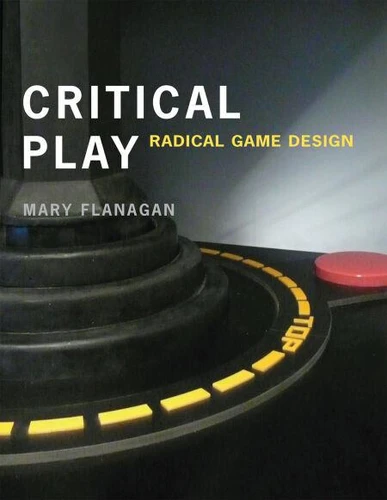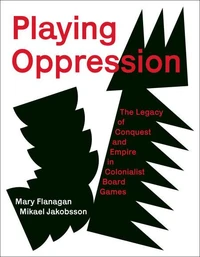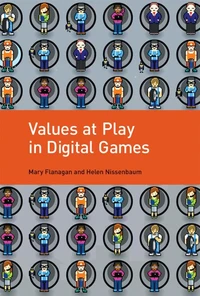Critical Play. Radical Game Design
Par :Formats :
Disponible dans votre compte client Decitre ou Furet du Nord dès validation de votre commande. Le format ePub protégé est :
- Compatible avec une lecture sur My Vivlio (smartphone, tablette, ordinateur)
- Compatible avec une lecture sur liseuses Vivlio
- Pour les liseuses autres que Vivlio, vous devez utiliser le logiciel Adobe Digital Edition. Non compatible avec la lecture sur les liseuses Kindle, Remarkable et Sony
- Non compatible avec un achat hors France métropolitaine
 , qui est-ce ?
, qui est-ce ?Notre partenaire de plateforme de lecture numérique où vous retrouverez l'ensemble de vos ebooks gratuitement
Pour en savoir plus sur nos ebooks, consultez notre aide en ligne ici
- Nombre de pages362
- FormatePub
- ISBN978-0-262-25819-7
- EAN9780262258197
- Date de parution07/08/2009
- Protection num.Adobe DRM
- Taille6 Mo
- Infos supplémentairesepub
- ÉditeurThe MIT Press
Résumé
An examination of subversive games like The Sims-games designed for political, aesthetic, and social critique. For many players, games are entertainment, diversion, relaxation, fantasy. But what if certain games were something more than this, providing not only outlets for entertainment but a means for creative expression, instruments for conceptual thinking, or tools for social change? In Critical Play, artist and game designer Mary Flanagan examines alternative games-games that challenge the accepted norms embedded within the gaming industry-and argues that games designed by artists and activists are reshaping everyday game culture.
Flanagan provides a lively historical context for critical play through twentieth-century art movements, connecting subversive game design to subversive art: her examples of "playing house" include Dadaist puppet shows and The Sims. She looks at artists' alternative computer-based games and explores games for change, considering the way activist concerns-including worldwide poverty and AIDS-can be incorporated into game design.
Arguing that this kind of conscious practice-which now constitutes the avant-garde of the computer game medium-can inspire new working methods for designers, Flanagan offers a model for designing that will encourage the subversion of popular gaming tropes through new styles of game making, and proposes a theory of alternate game design that focuses on the reworking of contemporary popular game practices.
Flanagan provides a lively historical context for critical play through twentieth-century art movements, connecting subversive game design to subversive art: her examples of "playing house" include Dadaist puppet shows and The Sims. She looks at artists' alternative computer-based games and explores games for change, considering the way activist concerns-including worldwide poverty and AIDS-can be incorporated into game design.
Arguing that this kind of conscious practice-which now constitutes the avant-garde of the computer game medium-can inspire new working methods for designers, Flanagan offers a model for designing that will encourage the subversion of popular gaming tropes through new styles of game making, and proposes a theory of alternate game design that focuses on the reworking of contemporary popular game practices.
An examination of subversive games like The Sims-games designed for political, aesthetic, and social critique. For many players, games are entertainment, diversion, relaxation, fantasy. But what if certain games were something more than this, providing not only outlets for entertainment but a means for creative expression, instruments for conceptual thinking, or tools for social change? In Critical Play, artist and game designer Mary Flanagan examines alternative games-games that challenge the accepted norms embedded within the gaming industry-and argues that games designed by artists and activists are reshaping everyday game culture.
Flanagan provides a lively historical context for critical play through twentieth-century art movements, connecting subversive game design to subversive art: her examples of "playing house" include Dadaist puppet shows and The Sims. She looks at artists' alternative computer-based games and explores games for change, considering the way activist concerns-including worldwide poverty and AIDS-can be incorporated into game design.
Arguing that this kind of conscious practice-which now constitutes the avant-garde of the computer game medium-can inspire new working methods for designers, Flanagan offers a model for designing that will encourage the subversion of popular gaming tropes through new styles of game making, and proposes a theory of alternate game design that focuses on the reworking of contemporary popular game practices.
Flanagan provides a lively historical context for critical play through twentieth-century art movements, connecting subversive game design to subversive art: her examples of "playing house" include Dadaist puppet shows and The Sims. She looks at artists' alternative computer-based games and explores games for change, considering the way activist concerns-including worldwide poverty and AIDS-can be incorporated into game design.
Arguing that this kind of conscious practice-which now constitutes the avant-garde of the computer game medium-can inspire new working methods for designers, Flanagan offers a model for designing that will encourage the subversion of popular gaming tropes through new styles of game making, and proposes a theory of alternate game design that focuses on the reworking of contemporary popular game practices.






